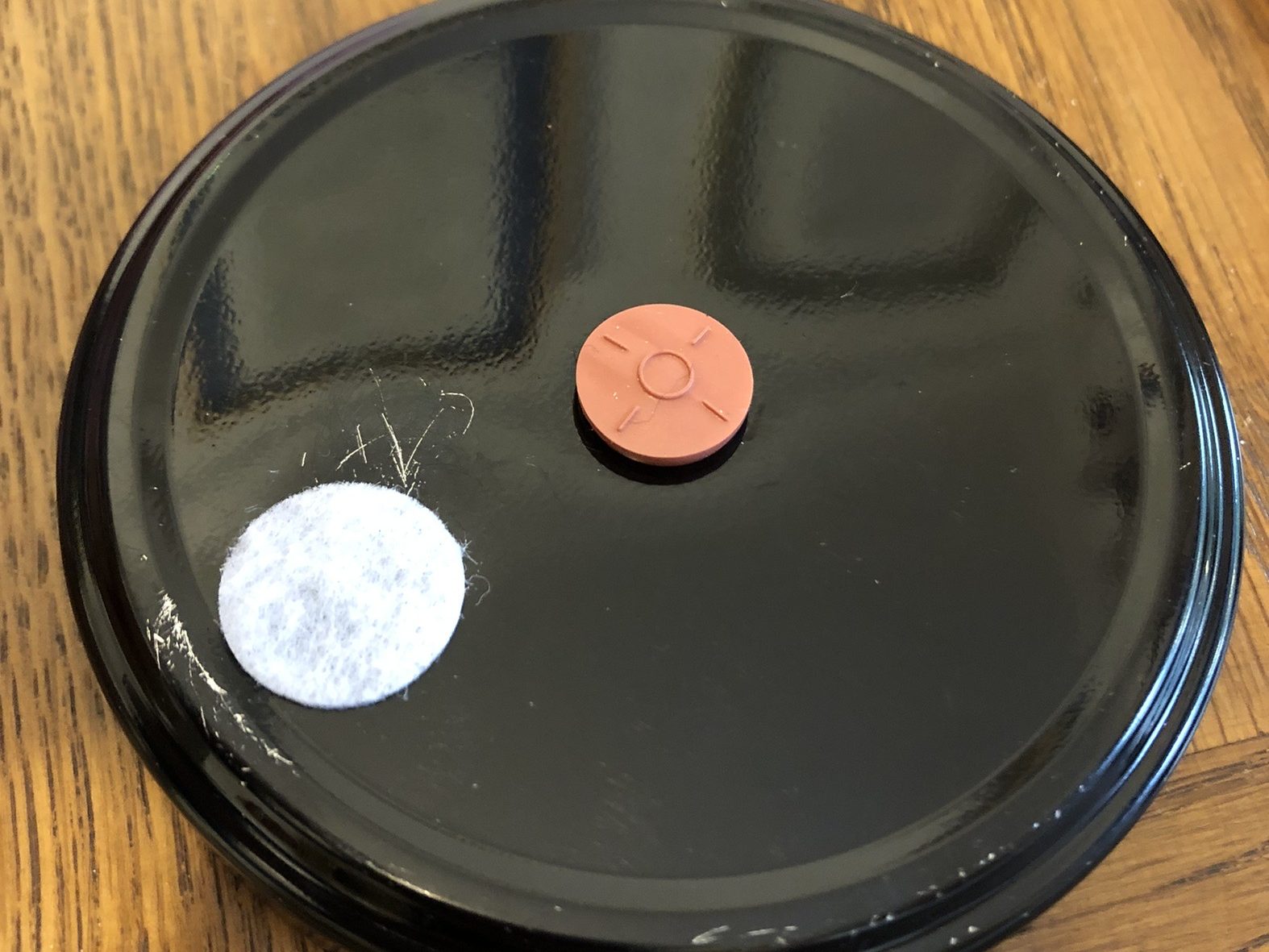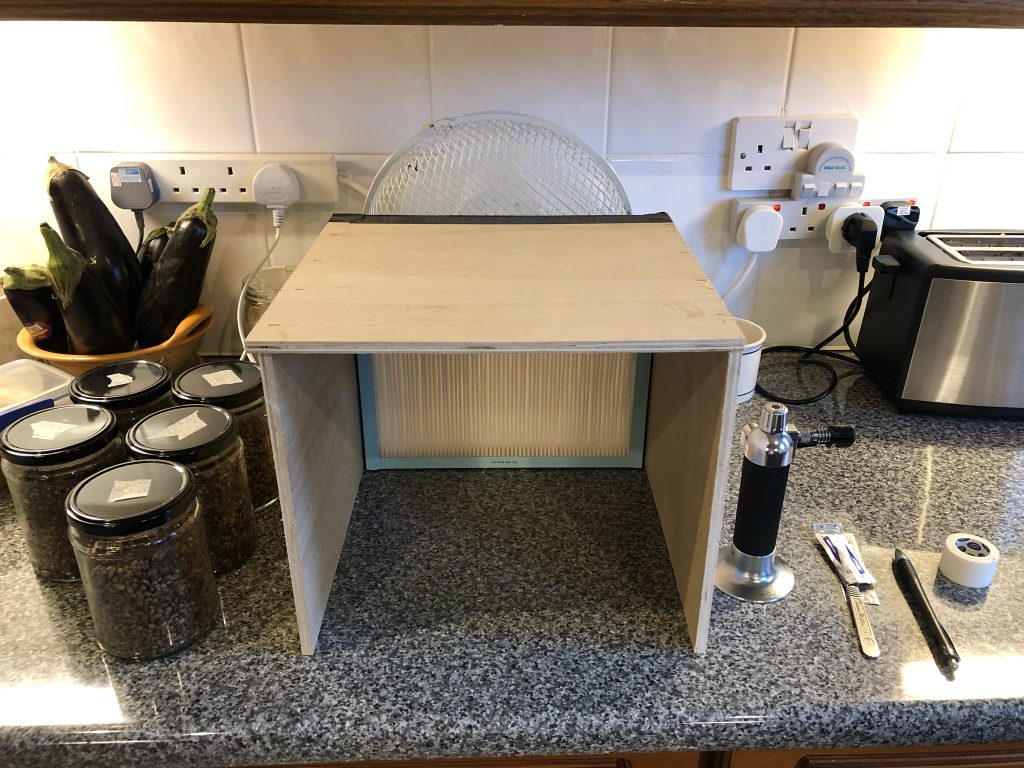Commercial growers will tell you they love their laminar flow hood, but let’s not forget the ancient wisdom that “love covers a multitude of sins” (1 Peter 4:8). Indeed the laminar flow hood appears to be a holy grail in mushroom growing equipment. Yet, I will argue that as with many things, prevention is better than cure, and understanding the basics of sterility and cleanliness may mitigate the need for such an expensive piece of kit.
Firstly, there are levels of cleanliness which are important to understand. Here are some definitions from medical equipment:
- Clean: removal of visible debris and dirt from an equipment
- Disinfect: to destroy all microorganisms EXCLUDING spores
- Pasteurisation: to minimise the microbial load of an object or substrate.
- Sterile: destruction of all microorganisms including spores.
Some examples of how to go about performing these functions. Cleaning can be carried out by simply washing with soapy water. Some methods of sterilisation may not penetrate visible debris, which is why cleaning is still important. Disinfection can be done with chemicals or with heat. Most goods placed within modern dishwashers are disinfected. For example, many people in Europe do not sterilise milk bottles for their babies (as opposed to UK). Instead they opt to put them in dishwashers. Since the gastrointestinal system is non-sterile, it is perhaps not as vital to sterilise such bottles, except if there are toxins within the residues left behind and not properly cleaned. Pasteurisation minimises the microbial load and therefore acts as a way to preserve perishable goods. This is the case with most commercially available milk.
Within mushroom growing, pasteurisation is mainly used for bulk substrate, because it is not cost- nor resource-effective to sterilise substrate. Instead, increasing the inoculation ratio can help to mitigate for competing organisms. Pasteurisation can be achieved using a few methods:
Disinfection is important for reusable containers as cleaning is insufficient to remove microorganisms from the surface. This is particularly the case if using buckets for mushroom growing (life I do). If there are microorganisms within crevices of these containers, or on the holes drilled, then these can act as competing inoculants for the next batch of mycelium. This thus increases the contamination risk. So I disinfect my buckets with a commercially available acid-based immersion disinfection broth. There are several which are used widely for home brewing which would be suitable for this.
Pastuerisation or disinfection can be achieved using several methods:
- Heat: immersing the substrate into hot or boiling water for some time
- Chemical:
- Alkaline: typically, hydrated lime dramatically raises the pH of the substrate and kills most microorganisms (except spores). This is called lime pasteurisation.
- Acidic: vinegar or a similar acidic solution can lower the pH dramatically and achieves a similar effect to lime.
Transfers: the source of contamination
I generally work with agar. Transferring from mushroom tissue to agar, or from agar to agar, or from agar to grain/sawdust are potential sources of contamination. This is because our hands, equipment and environment are laden with a variety of microorganisms. So in order to minimise contamination, here are a three main principles:
Key parts
These are parts of equipment that come into contact with with mycelium. They include the tip of the scalpel blade, or forceps, or spoon. These need to be sterile. Heating them on an open flame until red-hot ensures their sterility.
Hands
By default, hands are always dirty. Even if working with sterile gloves, you will touch unsterile surfaces such as the workbench or the outside surfaces of the agar plates or containers. By doing so, they will inevitably pick up microorganisms. Therefore, always consider them dirty. I do not work with gloves, and I sometimes only rinse my hands before inoculating, because I do not touch any key parts. Yet my contamination rate is low.
Sterile field
This is the area you consider sterile. For those with laminar flow hoods, it is the surface in front of the hood. For those using still-air boxes (SAB), they are the inside of the SAB (assuming it has been surface disinfected). I have a HEPA filter mounted onto 3 pieces of wood with a fan blowing behind. This provides me with a “sterile” field, and I will explain how.
How a flow hood works (components)
Flow
Flow can be defined as the rate of fluid passing a point per unit time. Generally flow is categorised as laminar or turbulent. Laminar flow occurs when all the particles of the fluid move in the same direction. Turbulent flow occurs when not all the particles move in the same direction, even if there is flow towards a general direction. To determine whether flow is likely laminar or turbulent, Reynolds number is calculated, which depends on the density of the fluid, the speed of flow and inversely proportional to the viscosity. When Reynolds number is low, flow is likely laminar. When it is high, flow is likely to be turbulent.
Laminar flow itself is governed by the Hagen-Pouseille equation. In essence, the lower the flow through smaller orifices, the more likely flow will be laminar. The many small fins on a laminar flow cabinet or hood direct air a certain way, slowing the flow and ensuring a laminar flow. But what is actually needed is clean air flowing in a general direction.
Filtered air
Air contains spores and microorganisms. In the human body, the nose is responsible for filtering the air from the environment to the lungs. For a cabinet or hood, this is achieved using High Efficiency Particulate Air (HEPA) filters. There are rated in terms of the average particle size efficiency, meaning that the higher the rating, the smaller the particle size it filters out. For the purposes of mushroom growing, H13 or H14 filters are sufficient.
As you can imagine, the smaller the particle filtered, the more resistance to flow and therefore the more powerful the fan required. There are graphs available online to estimate the fan required to produce a laminar flow cabinet. However, that is a tangent from the real purpose of this article, which is to demonstrate how it is possible to achieve low contamination rates without a laminar flow hood.
What are the options then?
Still air box
This is really just a large transparent container with holes for your hands. The still air means that once it is disinfected, there is little movement of air within the box, which minimises the chances of spores and bacteria landing on your plate. However, working with SABs are cumbersome as there is a limited space and all the containers have to be within the SAB. Moving hands in and out of SABs increases the chances of contamination due to the movement of air. Nevertheless, many hobbyists start with SABs and obtains decent successes with it.
Liquid culture and injection ports

Of course, if there is no opening of the sterile grain/sawdust containers, then there is little to no risk of contamination. Therefore, the use of injection ports for liquid culture has become popular amongst some growers. For this, a heat-sterilised needle connected to a syringe of liquid culture is pierced through a self-healing injection port. The grains inside are already sterile and there is no exposure to the environment so contamination rate is low. This is not the scope of this article and there are many other places to find out more information about this practice.
Turbulent flow hood

This is my cheap alternative to a laminar flow hood. It consists of a H13 HEPA filter I bought off the internet. This is meant as a replacement for a room fan-filter unit. To create a “hood”, I stuck or taped spare pieces of plywood to the sides and top of the HEPA filter. That creates a work area in front of a filter. For creating flow, I took the small fan that we tend to use for the two days of summer annually here in Manchester. Putting the fan behind the filter creates some positive pressure on the filter and generates a small amount of flow through the filter. That means that clean air flows from the filter towards my work area, ensuring some clean air flow away from the filter and therefore minimises the contamination from spores in the environment.
This, in combination with good sterile technique, affords a high degree of success and very little continuation problems. The materials cost me about £40, and it took me about 30 minutes to measure, cut and attach the pieces together.
Laminar flow hood or cabinet
These units typically cost about £500 or potentially about half the price if one builds it themselves. They work a similar way as my turbulent flow hood, but the laminar flow ensures no pockets of turbulence which theoretically can draw air from the environment back into the area of the flow hood.
Conclusion
There are several key aspects to maintenance of sterility and it is important to understand the difference in terms related to cleanliness. The maintenance of sterility when undergoing transfers involves multiple concepts, but need not be expensive, as my experience demonstrates. I hope that this provides some cheap alternatives when it comes to hobby growing of mushrooms.
Read about my oyster mushroom method here: MOMMY


[…] Please refer to the following post giving an overview of aseptic technique and why you don’t need a laminar flow hood. […]